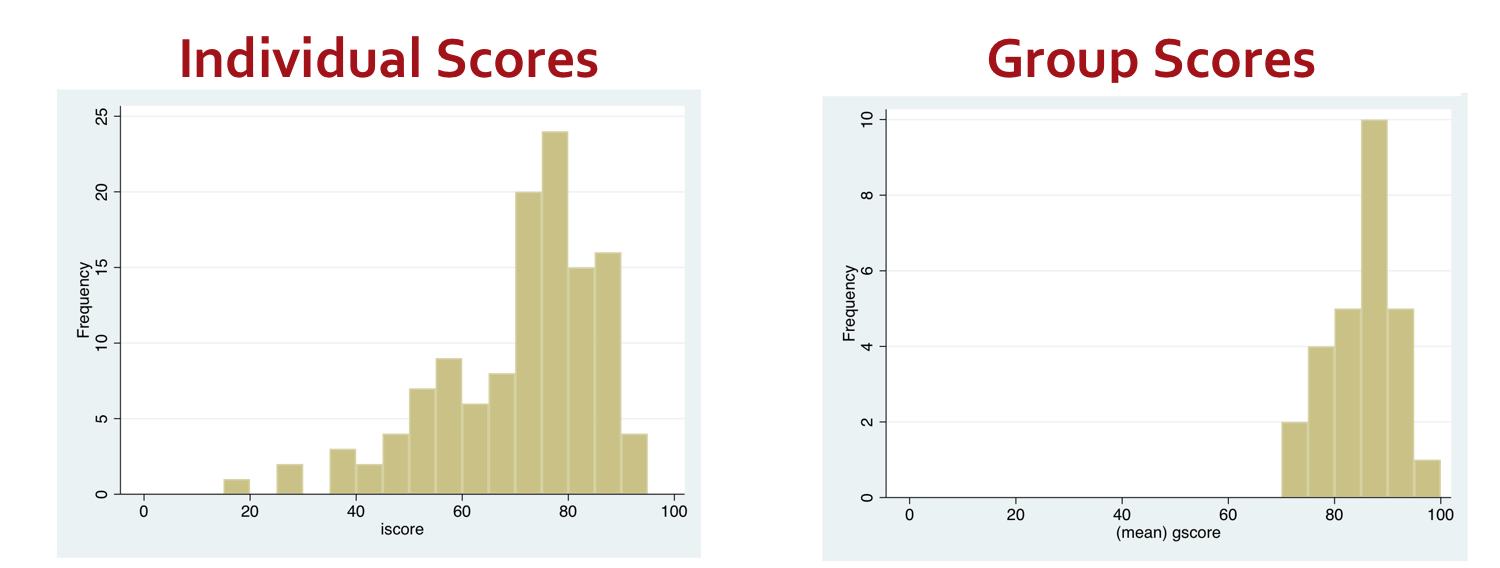All in on Two Stage Exams
Like so many things I’ve tried in the classroom this year, I first heard about two-stage exams at Carl Wieman’s summer workshop. The idea is to have students first take an exam individually (i.e., the usual way), and then have them take the same exam again in groups. My students in Applied Econometrics have done this three times this spring and the results have been glorious.
Individual exams are great motivators for student study, and can be good measures of learning. They also provide detailed feedback to students on what they need to improve on. Unfortunately, I believe the majority of students look at their grade and give the rest of the feedback little attention. Two-stage exams give a strong incentive to discuss the problems and find new solutions with other students, and in theory they should massively increase the learning that occurs during the exam process. Teddy Svoronos has found exactly that in the several classes he’s taught with two stage exams, and he joined Edward and me on the podcast to share his experience. I highly encourage readers to check out that episode as well as Teddy’s talk on the subject.
For years now I’ve had my econometrics students work in small groups (3-5 students) on a semester-long empirical project. They’ve produced some really amazing work, and many of the groups become pretty tight-knit as they also study and work on problem sets together. This spring, I’ve tried to take more advantage of these strong working relationships by having students work in these same groups on in-class exercises. It seemed perfectly natural that they would work well together in the second stage of exams too.
Both midterm exams this semester have been scheduled in evenings so that we have time for the individual (1 hour 15 minute) and group (30-45 minutes) stages. Evening exams have the added advantage that students that get extra time can start early in a nearby room and finish the individual portion of the exam exactly when everyone else does. Then they move to the main room and join their groups.
I have seen students work in small groups during class many times, but I’ve never seen the level of intensity of these second-stage groups. There is constant discussion and debate about the problems, and nearly universal participation and focus. Part of the reason is that they’ve just spent more than an hour struggling individually with the problems (imagine think-pair-share on steroids), but another part of it has to be the stakes. A student’s overall score on the exam is a weighted average of their individual portion (90%) and their group portion (10%) unless their individual score is higher in which case they just get their individual score. The group score can never bring down an individual score.

122 students and 27 groups took the first midterm. The mean score on the individual portion of that exam was a 70, but the average group score was 15 points higher. Part of this was due to a few very low individual scores, but there were big gains in the median scores too: 74 vs. 85. In every single group, the group’s score was higher than the average score of the individuals. At the very least, groups are recognizing which of their answers are most likely to be right. But it gets better: For half the groups, the group score was higher than any of the individual scores. That sure looks like evidence of learning to me, and that is why I’ll continue to give two stage exams.
NOTE: The banner artwork above is by William Hutchinson and can be found on Winchell Chung’s very cool Atomic Rockets website.